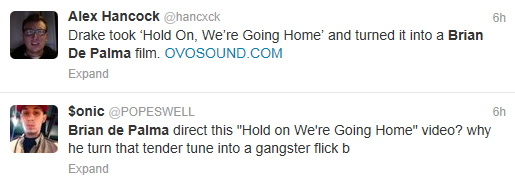2-HR PODCAST ON DE PALMA'S VERSION; DONAGGIO & 'PATRICK' REMAKE
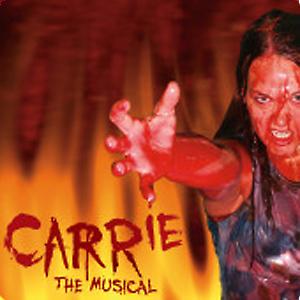 Yesterday, we posted a video review of Brian De Palma's Carrie which was the first part of a "Kings Of Horror" series in which the two hosts plan to review each movie based on a Stephen King novel or story. Of course, Carrie was the first one of those, and now today, we found out that the Now Playing Podcast is doing the same thing (both started October 1st), except going even more in-depth into the films and how they compare with the sources. The Carrie podcast, running two hours, features a terrific in-depth discussion of the De Palma adaptation, although one of the three hosts is way off when he implies that De Palma was in any way trying to put anything over on audiences by supposedly stealing from Hitchcock. He shows an ignorance of the fact that the links to Hitchcock were not only well-known among most people watching De Palma's '70s films, but they were overt and often even advertised as Hitchcockian. This aside, the discussion of Carrie is fun and interesting.
Yesterday, we posted a video review of Brian De Palma's Carrie which was the first part of a "Kings Of Horror" series in which the two hosts plan to review each movie based on a Stephen King novel or story. Of course, Carrie was the first one of those, and now today, we found out that the Now Playing Podcast is doing the same thing (both started October 1st), except going even more in-depth into the films and how they compare with the sources. The Carrie podcast, running two hours, features a terrific in-depth discussion of the De Palma adaptation, although one of the three hosts is way off when he implies that De Palma was in any way trying to put anything over on audiences by supposedly stealing from Hitchcock. He shows an ignorance of the fact that the links to Hitchcock were not only well-known among most people watching De Palma's '70s films, but they were overt and often even advertised as Hitchcockian. This aside, the discussion of Carrie is fun and interesting.(Thanks to Will!)
Meanwhile, opening Friday (and playing through October 27th) in Minneapolis is the recently revised version of Carrie: The Musical, brought to the stage by the Minneapolis Musical Theatre, which had always wanted to do the original 1988 musical, but the creators would never let them (or anyone) even read it, according to Pioneer Press' Chris Hewitt. MMT's artistic director Steven Meerdink tells Hewitt, "It's been on our list of shows to look at for a while, but we've never been able to get ahold of it." Talking about the revised version, Meerdink tells Hewitt, "The biggest thing they did is make it a smaller, more intimate show. I didn't see the original show, but they tried to make it a big blockbuster. Based on the clips I've seen, that was the biggest problem with it. It had a Phantom of the Opera feel, rather than focusing on the characters and story, and I think that's what they've done now by reducing it to a smaller version." talking about the tone of the new version, Meerdink tells Hewitt, "It's not a camp show at all. It's going to be a hard thing for us to convince people of, since we did Evil Dead and Bat People, but it's very much a serious piece that is relevant in today's society."
DONAGGIO TELLS 'PATRICK' DIRECTOR IT REMINDED HIM OF 1ST TIME HE SAW 'CARRIE'
Mark Hartley has directed a remake of Richard Franklin's Patrick, and tells Crave Online's Fred Topel that in preparation, he and his cinematographer Garry Richards watched "all of De Palma’s films, we watched a lot of Argento films," as well as The Legend Of Hell House, The Orphanage, Julia's Eyes, and The Changeling. Hartley also tells Topel about getting Pino Donaggio to compose the score for Patrick:
One of the highlights for me, in my life basically, was all the way through the writing of Patrick and all through the shot listing and all through preproduction in general, I was just constantly listening to Pino Donaggio’s music to get me in the mood. We wanted it to be a throwback to the films that I loved when I was growing up, but they’re all the films that were made by proteges of Hitchcock. They’re all made by Richard Franklin who made the original Patrick, by Argento and by Brian De Palma.
So all the way through the production of the film, the producer Tony Ginnane was saying, “We need to get a composer on board.” I was saying, “I’m holding out. We’ll finish the film, we’re going to do a cut, we’re going to send it to Donaggio and see if we can get him. Everyone thought it was just a ludicrous idea and that’s what we ended up doing. As I said, one of the great moment of my life is when I got an e-mail back from Pino saying that he loved the film. He actually said that it reminded him of watching a rough cut of Carrie which was praise beyond belief, and was happy to do it.
The score does divide people too because if you’ve got a Pino Donaggio score, why bury it in the mix? I feel you need to have it basically lead the film. I really love it. Scores now are just incessant percussion turned up to 11 and that’s the last thing I wanted for this film. It really is a throwback to Bernard Hermann’s scores.
Updated: Wednesday, October 2, 2013 11:20 PM CDT
Post Comment | Permalink | Share This Post




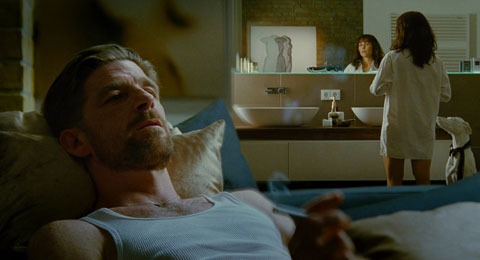
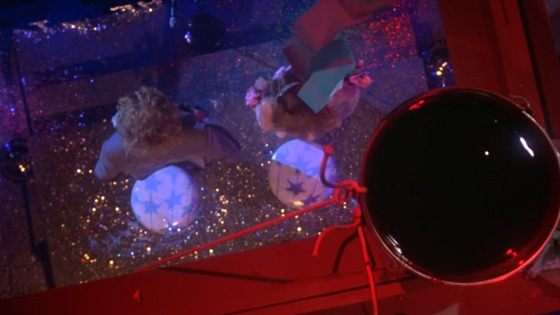
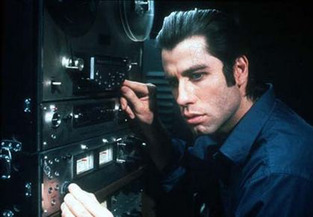 Scott Tobias
Scott Tobias  SPOILERS - In Brian De Palma's adaptation of James Ellroy's The Black Dahlia, there is a scene in which Bucky tells Kay that Lee's tragic past with his sister explains a few things, to which she shoots back at him, "No it doesn't." A similar tragic story of a sister in the past functions to "explain a few things" to Isabelle in De Palma's latest film, Passion, but the viewer, and eventually, Isabelle, are left wondering if any of it is true or not.
SPOILERS - In Brian De Palma's adaptation of James Ellroy's The Black Dahlia, there is a scene in which Bucky tells Kay that Lee's tragic past with his sister explains a few things, to which she shoots back at him, "No it doesn't." A similar tragic story of a sister in the past functions to "explain a few things" to Isabelle in De Palma's latest film, Passion, but the viewer, and eventually, Isabelle, are left wondering if any of it is true or not.